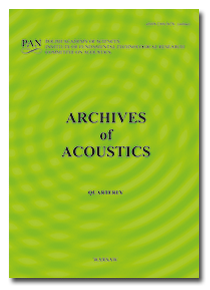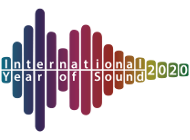Archives of Acoustics,
30, 1, pp. , 2005
The response of a Helmholtz resonator to external excitation. Part II: Flow-induced resonance
In the paper a phenomenon of sound production in a
resonator driven by an air jet has been investigated. Measurements of sound
spectra at the closed end of the resonator cavity were performed to determine
the influence of the jet velocity on the frequency and amplitude of excited
acoustic oscillations. It was found that in the sound generation process two
ranges of the jet velocity could be distinguished where different variations of
the oscillation frequency with the growing jet velocity were observed. After the
onset of oscillation the frequency increased fast with growing jet velocity and
the frequency increment was directly proportional to a value of jet velocity. At
higher flow velocities an increase in the frequency was still observed, but the
frequency growth was much smaller. The experiment has shown also that due to an
excitation of mechanical vibrations of the resonator elements a rapid change in
the oscillation frequency occurred. Finally, the experimental data were compared
to calculation results to examine the accuracy of the theoretical model, in
which a force driving the resonator was predicted from the vortex sound theory
and the resonator was modelled by an equivalent impedance circuit. Key words:
sound generation, flow-induced resonance, acoustic resonators.
resonator driven by an air jet has been investigated. Measurements of sound
spectra at the closed end of the resonator cavity were performed to determine
the influence of the jet velocity on the frequency and amplitude of excited
acoustic oscillations. It was found that in the sound generation process two
ranges of the jet velocity could be distinguished where different variations of
the oscillation frequency with the growing jet velocity were observed. After the
onset of oscillation the frequency increased fast with growing jet velocity and
the frequency increment was directly proportional to a value of jet velocity. At
higher flow velocities an increase in the frequency was still observed, but the
frequency growth was much smaller. The experiment has shown also that due to an
excitation of mechanical vibrations of the resonator elements a rapid change in
the oscillation frequency occurred. Finally, the experimental data were compared
to calculation results to examine the accuracy of the theoretical model, in
which a force driving the resonator was predicted from the vortex sound theory
and the resonator was modelled by an equivalent impedance circuit. Key words:
sound generation, flow-induced resonance, acoustic resonators.
Full Text:
PDF
Copyright © Polish Academy of Sciences & Institute of Fundamental Technological Research (IPPT PAN).





